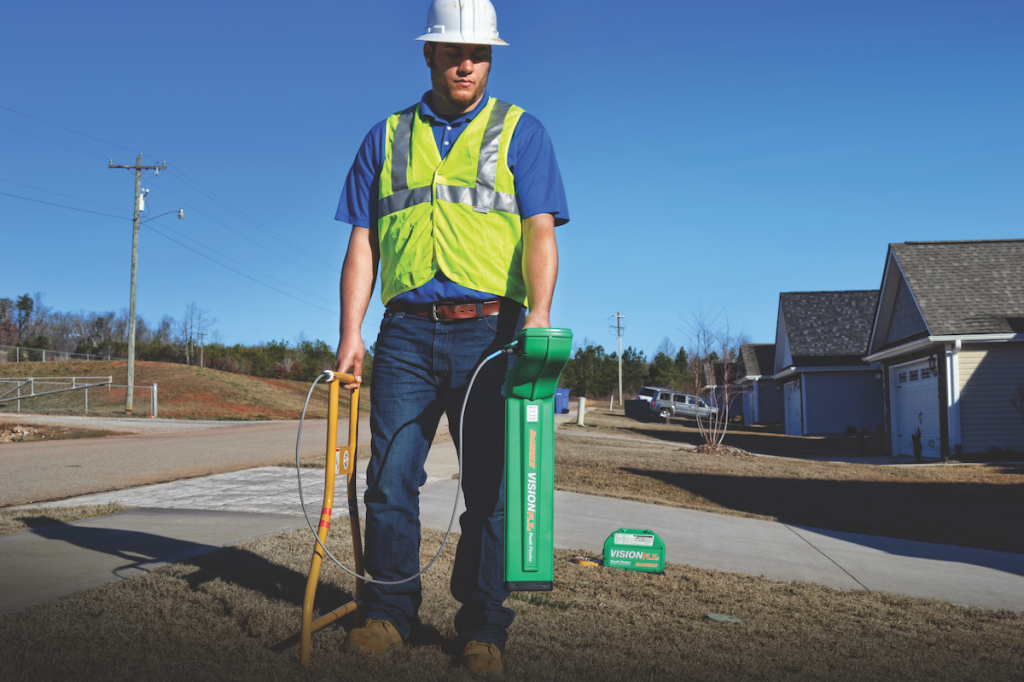McLaughlin Introduces Vision Underground Utility Locator Product Line

McLaughlin has launched a new line of underground utility locators, the Vision locators combine proven McLaughlin technologies to ensure accuracy with new features to help contractors find underground utilities more efficiently.
The Vision product line includes three models: the LX for utility contractors, the FLX2 with fault finding capabilities for power companies and secondary power contractors, and the premium GX2, designed with professional locators in mind.
“Utility contractors face a crowded underground infrastructure, unmarked utility lines and increasingly strict regulations, which makes accurate, timely locating more important than ever,” said Jeff Wage, vice president of sales at McLaughlin. “With the addition of the Vision product line, McLaughlin has an underground utility locating solution for everyone from the new utility contractor who is just starting out to the professional One Call contractor.”
Vision LX locator
The Vision LX locator has a streamlined design and simple user interface. For example, the LX combines the peak locating screen and null locating screen into one display. This allows the user to capitalize on the benefits of both functions — the accuracy of the peak mode and the user-friendliness of the null mode — without toggling back and forth between screens.
Other improvements to the display include an automatic depth and current measurement index, which automatically appears when the locator is positioned over a utility line, and a new compass icon. The compass automatically calculates the peak signal and visually informs the user of the direction of the utility path, making it easier to locate the entire line.
Vision FLX2 locator with fault finder capabilities
The Vision FLX2 has the same features and functions as the Vision LX locator plus secondary and sheaths fault-finding capabilities. Designed with power companies and secondary power contractors in mind, the FLX2 allows contractors to quickly and accurately pinpoint the location of faults in power and telecommunications cables.
Once the locator is connected to the utility line, a contractor can use an A-frame transmitter to find the fault. The contractor places the A-frame transmitter’s prongs into the ground, and the reading is sent to the receiver. If the receiver shows the signal is on the right side of the screen, the contractor proceeds forward along the utility line. If the receiver shows the signal is on the blue side of the screen, the contractor has passed the fault and is alerted to back up. Using this process, a contractor can narrow the location of the fault to within a few inches.
When used for its traditional locating capabilities, the FLX2 has five active frequency modes. Lower- frequency modes provide more accurate locates over longer distances; high-frequency modes use a powerful signal to get through resistant lines, like cast-iron pipes. The FLX2 allows the operator to adjust the frequency based on the needs of the utility line, which provides a more accurate locate.
Vision GX2 locator
The GX2 is the most powerful locator in the Vision product line. Using a 7-watt transmitter — instead of the standard 5-watt — the GX2 allows contractors to push the locating signal farther, which is ideal for long fiber runs or gas distribution projects with tracing wires.
To further extend the signal, the GX2 uses a dual frequency mode — that does not require Bluetooth — to simultaneously inject 9.5 kHz and 38 kHz signals into the utility line. When the 38 kHz signal begins to fade, the operator can use the receiver to toggle to the 9.5 kHz frequency and can continue locating.
Because some fiber providers use a custom frequency, the GX2 gives contractors the flexibility to program other frequencies into the locator for added jobsite efficiency.
Semiautomatic and manual gain adjustment
Gain adjustment refers to the receiver’s sensitivity to the magnetic field emitted by a utility line. “The benefit of the semiautomatic gain is that it’s a very precise method of locating — especially in congested areas — and the technology is exclusive to McLaughlin,” says Wage. “Because manual gain is a more commonly used method of locating, some contractors are hesitant to try the semiautomatic gain feature.”
All three Vision locators offer dual functionality, which means contractors can engage the semiautomatic gain on congested, urban jobsites where signal distortion is a common challenge, and use the manual gain method when working in less congested areas.
While competitive products use two antennas to measure depth readings, McLaughlin Vision locators use three. With the push of a button, the locator simultaneously takes depth readings from all three antennas and averages the measurements for a more accurate reading. For added durability, the antennas are rubber mounted inside the injection-molded locator case so they can stand up to tough jobsite conditions.
To help contractors be more efficient on the jobsite, the Vision locators have a waterproof inductive clamp. This means the Vision locator can lay on or partially grip the utility and produce an accurate reading, unlike competitive locators that require the clamp to fully encircle the utility, which creates extra labor for contractors.


